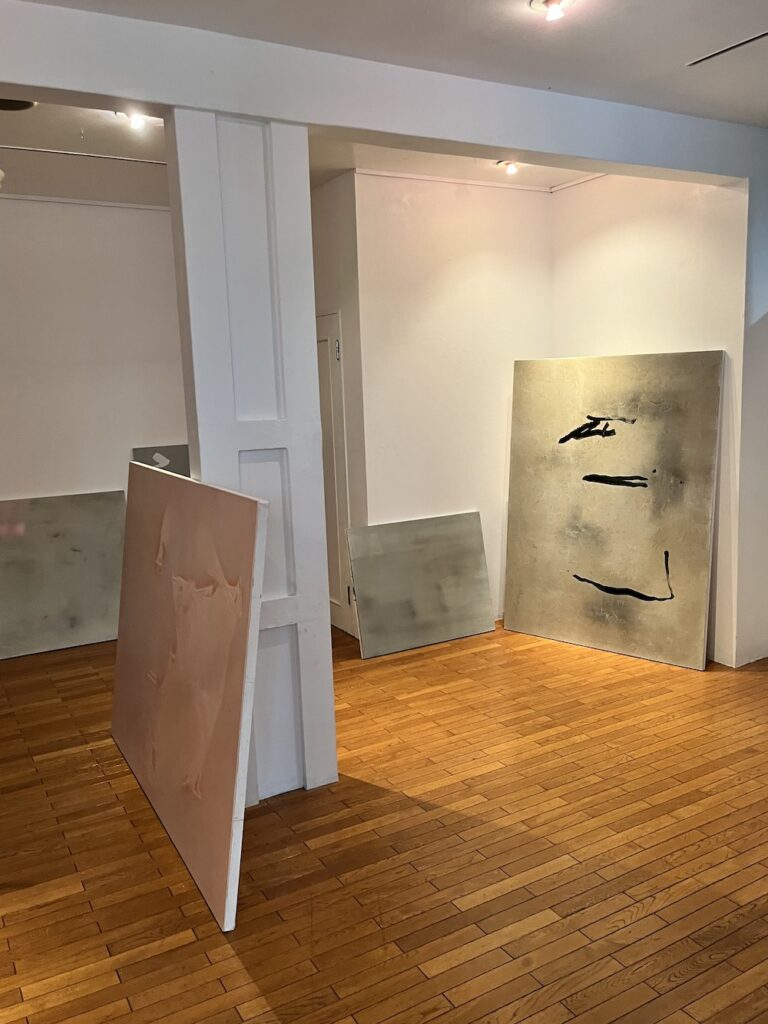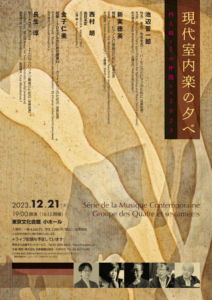solo exhibition
“envision sound - 12 days with 12 paintings and 12 tracks – “
Date 9/2 - 9/17 closed: Mon,Tue
Place Gallery KOBO CHIKA
Opening Reception 9/2 5pm-7pm
Installation view



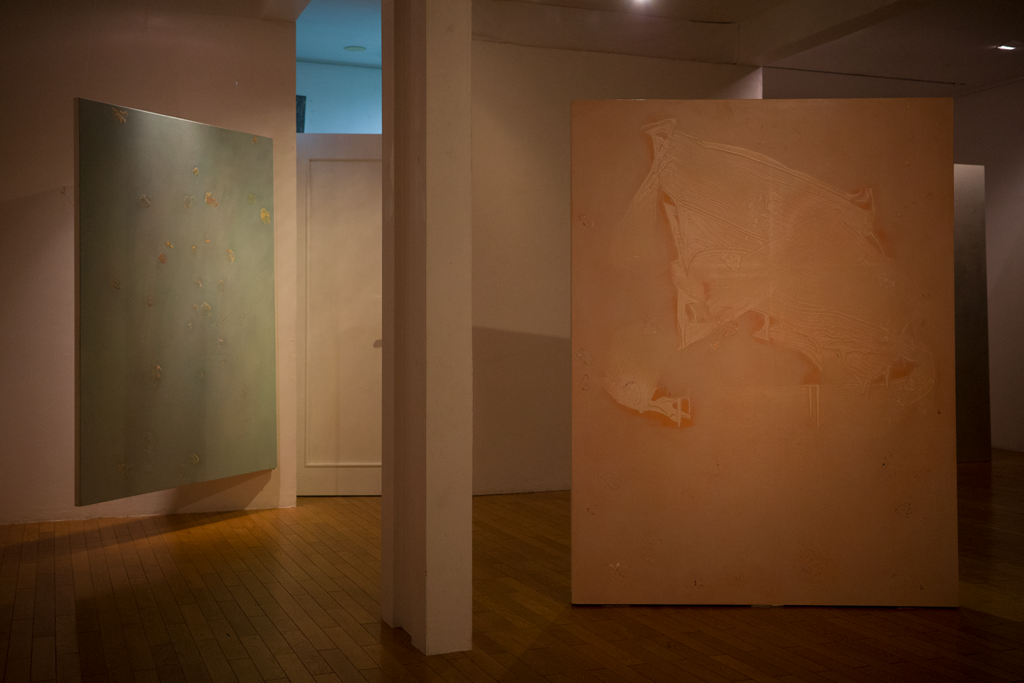

painting works
es_1 acrylic on canvas 194x130cm 2023
es_2 acrylic on canvas 162x122cm 2023
es_3 acrylic on canvas 91x73cm 2023
SA_07 acrylic on canvas 91x91cm 2022
es_4 acrylic on canvas 91x91cm 2023
es_5 acrylic on canvas 194x130cm 2023
es_6 acrylic on canvas 53x41cm 2023
es_7 acrylic on canvas 53x41cm 2023
es_8 acrylic on canvas 53x41cm 2023
es_9 acrylic on canvas 162x122cm 2023
es_10 acrylic on canvas 162x122cm 2023
es_11 acrylic on canvas 162x122cm 2023
es(envision sound)
SA(sakamiti ako)
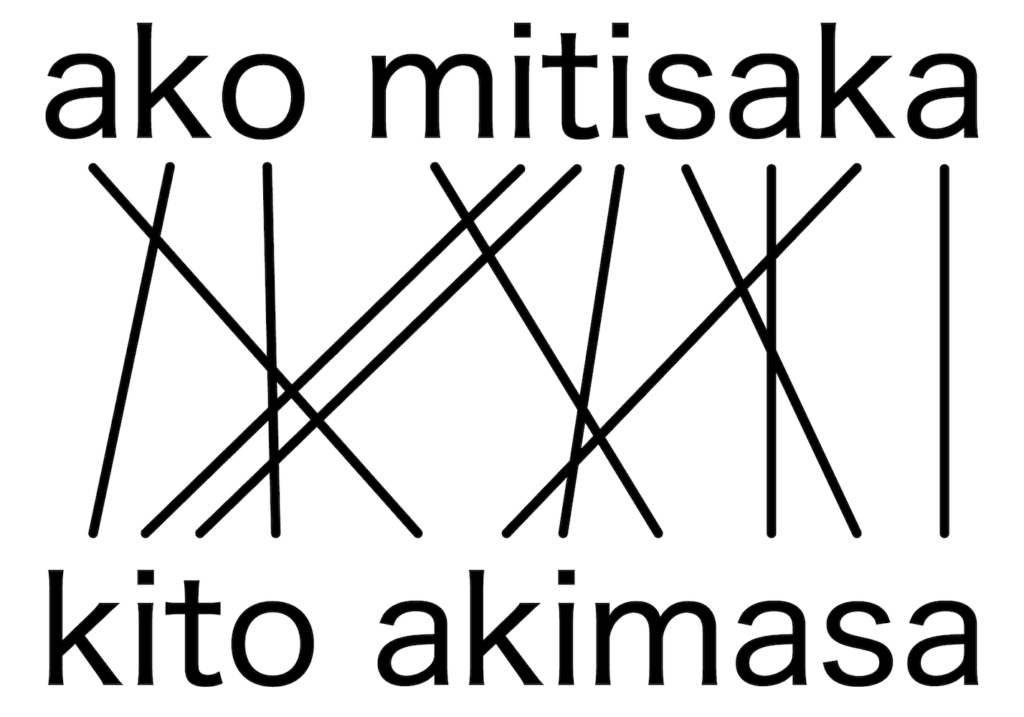
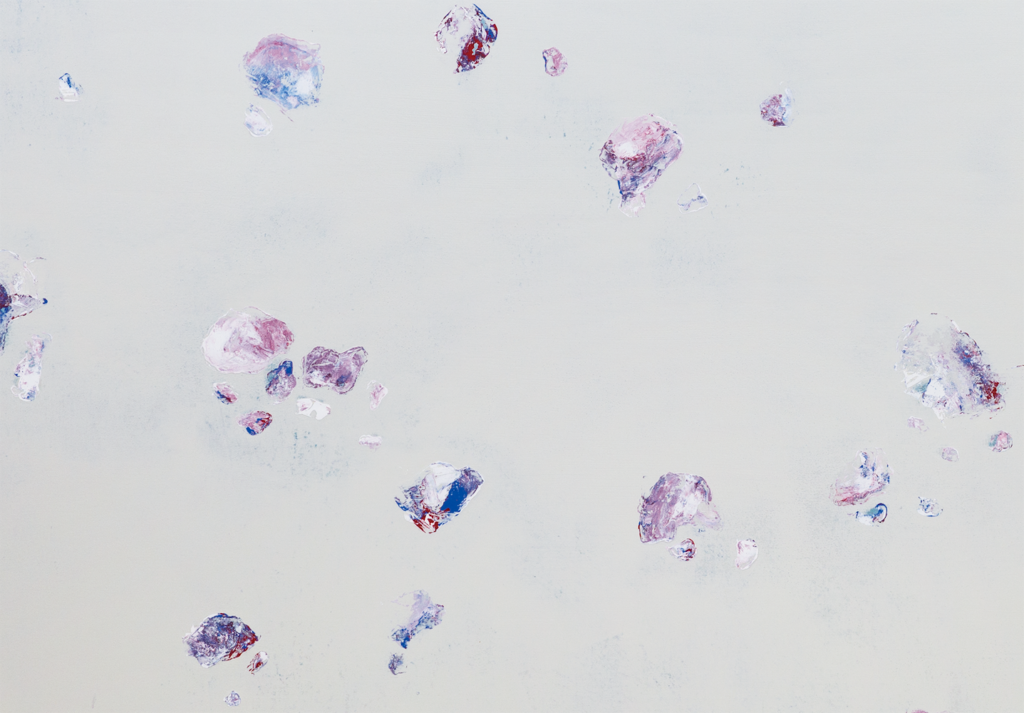
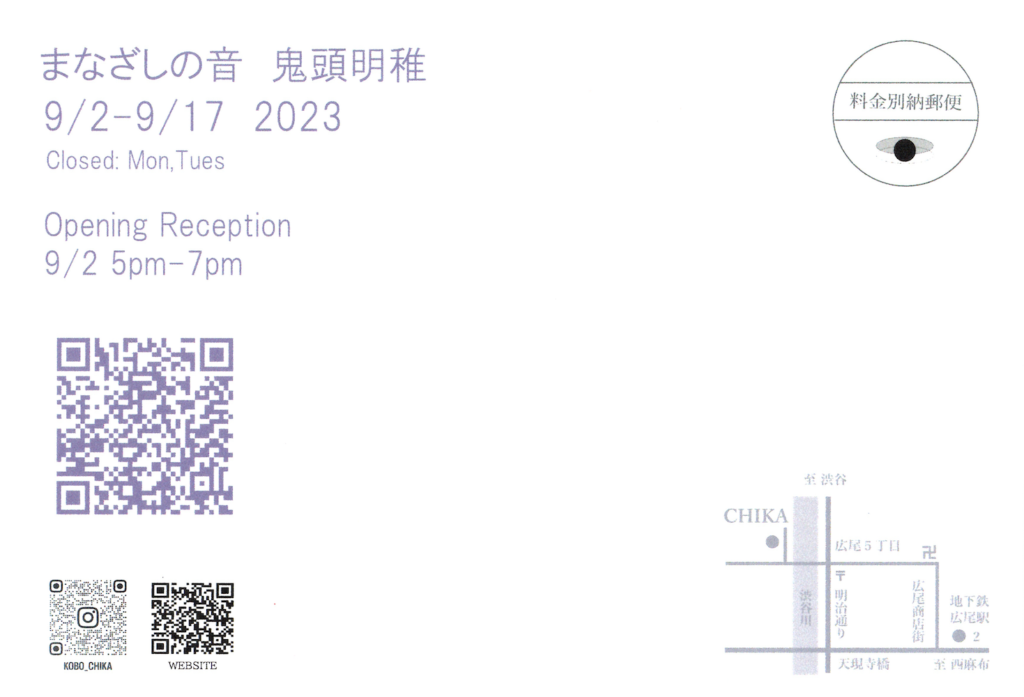
Artist Statement 08.2023
Art has presented the relationship between people and the world in response to the changes of the times. In the history of Japanese art, the fuzzy body developed around Tenshin Okakura (1863-1913) in the early Meiji period (1868-1912) was an experiment in incorporating Western spatial expression into Japanese painting. Shunso Hishida (1874-1911) attempted to create decorative paintings by erasing the background as a solution to the muddy images seen through a color filter, but the invisible background remained as a conceptual dimension.
As can be seen in Josef Albers (1888-1976) color experiments, color filtering (transparency of color) through glazing (superimposition of colors) and scumbling changes the degree to which the eye is blocked and affects the conceptual pictorial space. This confirms the psychological effect in the transmitted light of stained glass. In addition, paintings by Vincent van Gogh (1853-1890) and others, in which the brushstroke (action) is intentionally replaced by form, blur the boundary between the three-dimensional space and the conceptual painting space. In addition, the works of Brice Marden (1938-), while decorative, add another conceptual dimension to the painting surface through glazing.
He works on cotton canvas with a ground coating. He uses acrylics for health reasons, although oil paint is more his natural medium. The images he paints, which are renewed on a daily basis, are fragments of his gaze that are not fixed in place, and are also the process of creation itself. By leaving traces of the gaze on the canvas, the blank canvas becomes a painting.
It is not the first time that we are troubled by various noises in our daily lives. Pollution, noise, electromagnetic waves, radioactivity, viruses, and other noises that affect our daily lives are often invisible. The title of the exhibition, “envision sound” is intended to "make visible" sound.
12.2023
In June of last year, Mr. Nakatani of the studio Chika approached me with the project "sound x painting" and we agreed that it would be a good opportunity to try something I had not been able to do before, since it would be my last solo exhibition in 10 years. While discussing current views on painting and sound, we first proposed the approximate size and number of painting works to be exhibited. The combination of painting and sound had been a long time in the making, but had never been realized because of a lack of understanding of the relationship between my own painting works and sound.
The words that came up in their dialogue were "noise" and "unknown works". Since last solo exhibition (2012), my works has often been hindered by noise and has not gone well. In addition to the physical noise such as tinnitus, visual noise, and dizziness that have become more acute with age, I have come to realize that various information in my daily life has become noise, and that the emotions, memories, and thoughts that interrupt my senses while creating have also become noise. I thought that I was fixing my own noise on the canvas, but considering that I had never had an object that I wanted to paint since I was a student in the first place, I think it is a little different. Painting exists in order to fix a representation as a form on the canvas. When an image is fixed on the surface of a painting, I reflexively hates the fact that the form that is burned into my eyes will not leave my mind, and I begin to erase the image that is fixed. This contradicts the reason for the existence of painting. When there is nothing to paint and nothing is painted, what remains in the memory are the traces of the physical process of creation and the actions left on the canvas by moving the body and the brush, or the images of formative elements such as shapes, colors, and textures that have been painted over and over hundreds or thousands of times and then erased.
In July, just as I was about to start preparations, I contracted COVID19. While recuperating at home, I was deprived of electrolytes and became unconscious. Because it was during the peak of the fifth wave, there was no place to take me to the emergency room, and I was hospitalized 12 hours later. I regained consciousness about 36 hours later. After being discharged from the hospital, I continued to feel ill for more than six months, but finished preparing canvases by the end of the year.
This spring, I was shown a rough sketch of the exhibition that Mr. Nakatani had drawn. It was an installation using painting pieces. The first proposal was to view the paintings in the dark. The darkness of the Rothko Room (Mark Rothko 1903-70), which I once saw in London, reminded me of cave murals. Another suggestion is not to hang the work on the wall; I remember a huge flat work by Schnabel (Julian Schnabel 1951- ) was exhibited in a gallery in Ginza, Tokyo, in the 1980s, hanging at an angle on the wall of a basement. It was a square plane itself and a painting, which was typical of Schnabel's style. The keyword of the proposal was "fluffy feeling. It was inspired by the end of summer, the change of season, and the month of September, when the rhythm of life changes.
In March, I started working on the sound design in parallel with the painting. The editing process on the PC is similar to creating a painting. What is different from painting is time. The sound is a cohesion of time. I began recording environmental sounds in April and became even more conscious of time than when editing audio, and this sense of time fed back into the creation of the paintings. As in the case of the paintings, I did not want the phrases to remain in my ears, so I created a stream of randomly changing sounds. I did not want to create a song, so the resulting sound data was not music. Of course, it was not background music for the exhibition space. It was part of an installation created using the same procedure as the painting work.
In April, the first draft of the artist statement was submitted.
In July, I needed images for the exhibition's DM, and thought about using images of old works instead of new works that were changing day by day, but decided to take some pictures of the work in progress and use them. I was helped by Mr. Nakatani's words, "Let's keep the mystery alive," as he said. By doing so, the DM functioned as a part of the work, and as a result, I was able to maintain the consistency of the production process.
In August, I carried the paintings in without letting Mr. Nakatani know the top and bottom, length and width of the paintings so that I could start working on the spatial composition without any preconceived notions. When I went to the gallery the next day, the entire composition was almost complete. Over the next week, we worked on it together. We moved from hanging the paintings on the wall to standing them on the wall. To stand it on the floor, to support it, and to make it float. We solved problems one by one and moved forward. 12 tracks of sound were played on different days using wireless speakers. Narrow down the spotlight. The work to set up the work vertically in the center of the exhibition hall proved difficult.
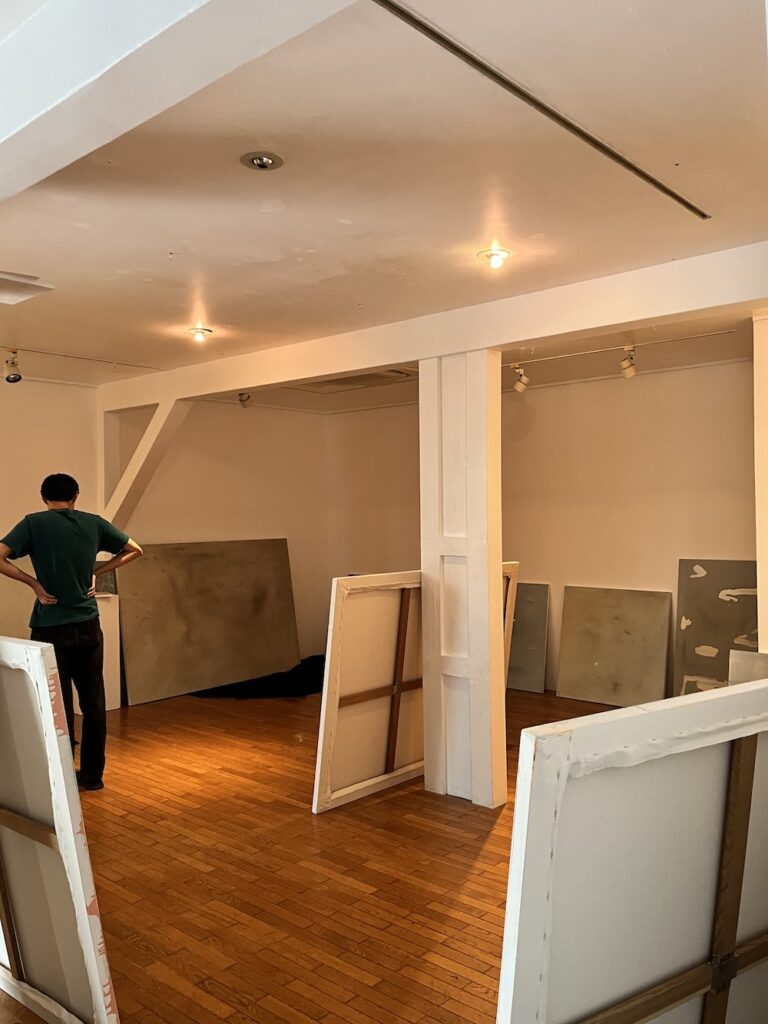
24.08.2023

